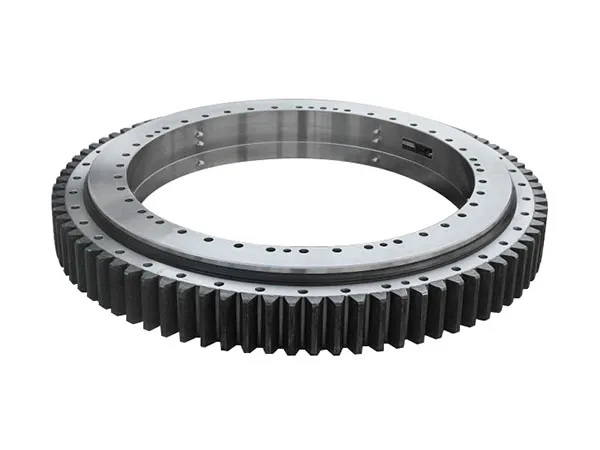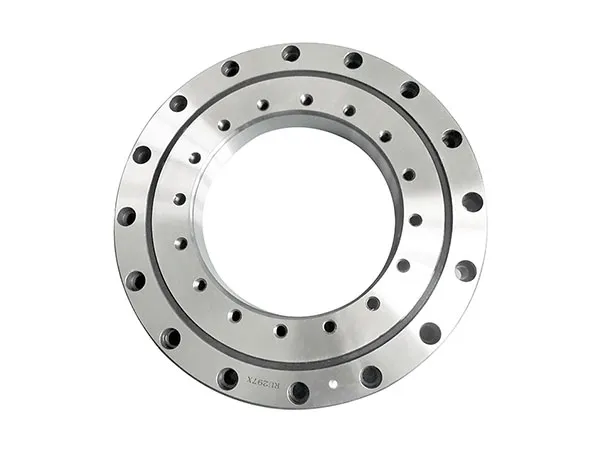Выбор правильного поворотный подшипник is crucial for the efficient and safe operation of machinery. It involves a detailed analysis of the application’s requirements and the operating environment.
How to choose a slewing bearing

1. Understand Load Requirements
Slewing bearings are designed to handle complex load combinations. You need to accurately determine all the loads acting on the bearing:
Осевая нагрузка (Fa): The vertical force acting along the axis of rotation.
Радиальная нагрузка (Fr): The horizontal force acting perpendicular to the axis of rotation.
Tilting Moment (M): The force that tries to tip the bearing over. This is often the determining factor for slewing ring selection. It’s a product of a force and its distance from the bearing’s axis of rotation.
It’s essential to consider both static (at rest) and dynamic (during operation, including impact and shock loads) maximum loads. Manufacturers often provide “static limiting load diagrams” to help estimate the required bearing size based on axial load and tilting moment.
2. Consider Bearing Type
Different slewing bearing types are suited for various load capacities and performance characteristics:
Four-Point Contact Ball Slewing Bearings:
Характеристики: Compact structure, легкий вес, four-point contact between balls and raceway. Can bear axial, радиальный, and tilting moment loads simultaneously. Good for low to medium speeds.
Приложения: Small to medium-sized cranes, экскаваторы, welding operators, slew conveyors.
Crossed Cylindrical Roller Slewing Bearings:
Характеристики: Rollers arranged in a 1:1 cross pattern. Offer high manufacturing precision, компактная структура, and high rigidity. Can withstand axial, large radial, and tilting moment loads simultaneously.
Приложения: Робототехника, Станки, медицинское оборудование, heavy machinery like large cranes and excavators where high accuracy and rigidity are paramount. Generally limited to lower continuous slewing speeds compared to ball bearings.
Double-Row Ball Slewing Bearings:
Характеристики: Three races with two rows of steel balls (often different diameters). Good for large axial forces and tilting moments.
Приложения: Tower cranes, truck cranes, and other loading/unloading machinery requiring medium to large diameters.
Three-Row Roller Slewing Bearings:
Характеристики: Three separate raceways for upper, lower, and radial rollers. Can accurately determine the load on each row. Offer the largest bearing capacity among standard types, with firm structure and large shaft/radial dimensions.
Приложения: Heavy machinery requiring large diameters, such as bucket wheel excavators, marine cranes, ladle slewing equipment, and large tonnage truck cranes.
3. Evaluate Rotational Speed and Performance
Требования к скорости: Determine the maximum operating speed. Four-point contact ball slewing bearings generally have higher speed capabilities and lower friction than crossed cylindrical roller bearings.
Friction and Efficiency: Lower friction leads to less heat generation and more efficient rotation.
Accuracy: For applications requiring precise positioning (например, робототехника), select bearings with minimal clearance and high manufacturing precision.

4. Account for Environmental Conditions
Температурная диапазон: Standard bearings typically operate between -30°C and 120°C. Extreme temperatures (very high or low) may require special materials, lubricants, and sealing.
…
More detailed information about how to choose slewing bearings can be clicked to visit: https://www.mcslewingbearings.com/a/news/slewing-bearing-choose.html


